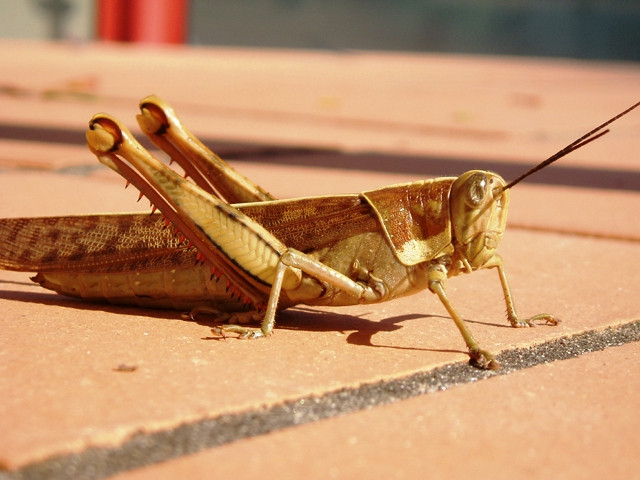Look out for the locusts
Residents of Ghotki must brace themselves for the incoming locusts, reported to be spread over 11 kilometres.

Look out for the locusts
Swarms of this special breed of grasshoppers have entered the desert areas of Sindh from the Indian border and are moving towards Ghotki. A large movement of locusts was seen in Khangarh taluka of Ghokti and if they proceed further, they will destroy the crops, especially vegetables and standing crops of cotton, sugarcane and rice.
The Express Tribune contacted the assistant entomologist of Agriculture Department, Ghotki, Muhammad Jhakro, who is living in the desert near Khangarh to observe the locusts’ movements. “They are not moving so much in the night but their movement will increase in the morning,” said Jhakro.
The area where Jhakro is camping is located 50 kilometres away from the Indian border. “You can spot a couple of houses here and there, otherwise there is hardly any population or crops,” he said, adding that a plane will arrive early morning on Friday to spray pesticides.
EDO Agriculture Riaz Dayo added that the plant protection department has sent its teams, along with spray-mounted vehicles, to Ghotki from Bahawalpur, Rahim Yar Khan and Sukkur.
According to Jhakro, the best time to combat locusts is either early morning or evening because that is when they are most active.
The EDO assured that their department is prepared. “After receiving information of a possible locust attack, I informed the provincial and the federal government and the district administration of Ghotki,” said Dayo, adding that they “are ready to face this challenge”.
Dayo explained that there is nothing to worry about at the moment as Khangarh is a desert area but if the locusts manage to get into other parts of the district, then there will be a disaster.
In 1991, the locusts attacked Ghotki district but they were controlled before they could cause any damage, said Dayo. However, they caused enormous losses during that attack in Ghotki and Sukkur districts around 35 years ago, he recalled, adding that the devastation took place because modern technology was unavailable at that time.
with additional input by hira siddiqui
Published in The Express Tribune, September 17th, 2010.



















COMMENTS
Comments are moderated and generally will be posted if they are on-topic and not abusive.
For more information, please see our Comments FAQ